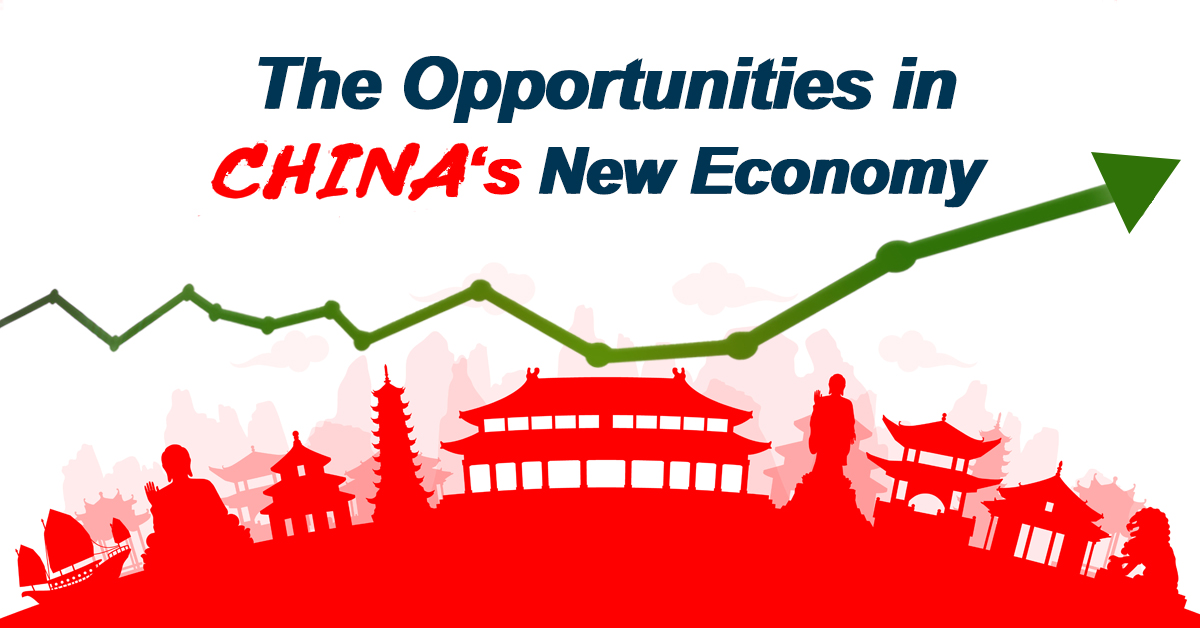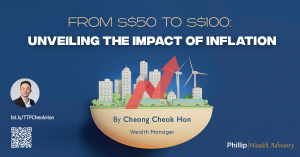The Opportunities in China’s New Economy December 24, 2020

[This article was first published in The Edge on 13 November 2020]
The suspension of the Ant Group’s IPO, which would have been the world’s largest, has pivoted investors’ attention to China’s new economy. In Hong Kong’s stock market, the China new economy is not new. In January 2018, the Hang Seng SCHK New Economy Index (HSSCNE) was launched on the Hong Kong Stock Exchange. This was followed by the Hang Seng China New Economy Index (HSCNE) in September 2018.
For a while, both indices were relatively stable and correlated with the benchmark Hang Seng Index (HSI). However, after March 2020 — a trough for the global economy — the indices be-gan to outperform the HSI.
Investors may be curious what “new economy” is all about. Actually, there are no clear bounda-ries. High-growth or cutting-edge technology industries can all be considered new economy.
Traditionally, the HSI is dominated by financials, which accounts for 43.66% of the index. It is followed by information technology (19.20%) and properties & construction (8.96%). Industry weightings in the new economy indices are totally different. Information technology, consumer discretionary and healthcare are the top three in either HSSCNE or HSCNE. If your portfolio solely consists of an ETF tracking the HSI, you may be over- exposed to the financial sector. More opportunities exist in the three industries mentioned above.
Information Technology

Many people believe in the potential of IT hardware development, especially after the recent rapid developments in telecommunication equipment for 5G and semiconductors in China. However, we cannot overlook another sector — Internet services. E-commerce is long considered one of China’s most successful Internet offerings and most investors would have heard of Alibaba Group and JD.com.
E-commerce aside, another trend has been growing gradually in China — Software as a Service (SaaS). SaaS is a software distribution model based on cloud computing, which customers can ac-cess through third-party applications. Founded in 1999 and based in California, the US, Salesforce is one of the successful global SaaS providers. SaaS offers the following business solutions: client relationship management (CRM); customer services and call centres; enterprise resources planning (ERP); communications; human resource management (HRM) and collaborative office automation (collaborative OA).
China’s SaaS market has just started, but its growth is accelerating. Covid-19 was partly responsi-ble, as it forced many more enterprises to digitalise, which made them realise the advantages and importance of SaaS. Its market in 2019 was worth RMB5.49 billion ($1.12 billion), up 42% y-o-y. This was much higher than the global SaaS market growth rate of 18.8% y-o-y.
Internet giants in China stepped into SaaS early. In 2018, Tencent, Meituan, Alibaba and Baidu restructured their operations to focus on an upgrade of their industrial Internet software. During the Covid-19 outbreak, DingTalk (by Alibaba), Tencent Meeting (by Tencent) and Lark (by ByteDance) gained huge benefits from a sudden burst of demand for telecommuting.
Consumer Discretionary

Consumer discretionary is a broad category. It includes but is not limited to: automobiles; household goods & electronics; travel & leisure; media & entertainment; support services and specialty retail.
Support services is one area that investors have not been paying much attention to. In China’s new economy indices, it specifically refers to education. The growth of Chinese online education providers has skyrocketed in recent months due to Covid-19, which compelled educational institutions to turn to online classes and courses. With the postponement of the start of school till the end of April 2020, some 265 million Chinese students are estimated to have switched to online courses.
Already, as at March 2020, the number of online educational users reached 423 million, an increase of 110.2% from the end of 2018. China’s online education market is expected to continue to grow and reach RMB575.3 billion by 2022, according to China’s iiMedia Research Group.
In the past few years, online education has been expanding in the first- and second-tier cities of China. During Covid-19, online education was able to penetrate its third- and fourth-tier cities. These markets are expected to become the main sources of growth for China’s online education industry in the next few years.
Healthcare

Healthcare comprises pharmaceuticals & biotechnology and healthcare equipment & services. Again, due to Covid-19, investors have been closely following pharmaceuticals & bio- technology for potential vaccine de-velopment. At the same time, the Chinese government is supporting a transformation of China’s healthcare services, which combine Internet and general health. Its Internet and general health initiative is currently fo-cused on: medicine retailing; online consultation and medical insurance.
From 2012 to 2018, China’s Internet healthcare market ballooned from RMB6.7 billion to RMB49.1 billion. This represents an average annual compounded growth rate of 39.37%. China’s QianZhan Industry Research Institute expects the market to top RMB94 billion this year.
The epidemic has also promoted the emergence of a large number of Internet hospitals in China. Existing medical institutions, too, have collaborated with large Internet healthcare participants to launch online consul-tation platforms. The number of users and penetration rate of China’s Internet healthcare platforms have in-creased by around 30% within these two years.
Besides public hospitals, Ali Health, JD Health and Ping An Healthcare and Technology are the three ma-jor players in the sector. They are all trying to close the circle loop of “doctor, pharmaceutical and medical insurance” to provide one-stop healthcare management platforms to consumers.
More to come
The biggest commonality among these three industries is that they all meld the Internet with traditional indus-tries. There are more successful examples. Online payment is essentially a combination of the Internet and payment services, while online-to-offline retailing — or O2O — is a marriage of the Internet and brick-and-mortar retailing. That sort of liaison was how FinTech surfaced in the first place.
In this post-Internet era, the Internet technology itself in China has matured, providing the foundation for the offshoots of China’s new economy. There are more traditional industries waiting to be yoked to Internet ap-plications, which can support the further growth of the new economy.
There’s just one caveat: challenges involving complex regulatory issues lie ahead for the new economy. The growth and expansion of the new economy companies have caused unease among the regulatory authorities in China. The IPO suspension of Ant Group, one of the leading FinTech companies in the world, is one exam-ple. Ant’s core business in credit payment and online lending differs from traditional banks, and their ad-vantage lies in fast approval and easy access to credit.
With the ability to assess consumers’ credit limit and approve micro loans within five minutes based on their behavioural and transaction data generated from Alipay, Ant has largely disrupted traditional banking. More-over, online micro loans are currently not subjected to regulations such as reserve ratios or directives on inter-est rates set forth by the People’s Bank of China (PBOC). The regulatory authority released a draft regarding online micro lending activities for public comments two days before the unexpected and abrupt suspension of Ant’s IPO.
It is our view that the Chinese government is not trying to restrict Ant’s growth, but rather to ensure that Ant adheres to certain monetary policies and regulations set forth by the PBOC. While China’s FinTech sector may be under scrutiny now, we believe that other sectors under the new economy will face similar situations at some point in time. In future, to accommodate the growth of the new economy, the regulatory authorities and companies in the new economy will have to work closely to facilitate a regulatory environment where growth is not compromised by over-regulation.
Disclaimer
These commentaries are intended for general circulation. It does not have regard to the specific investment objectives, financial situation and particular needs of any person who may receive this document. Accordingly, no warranty whatsoever is given and no liability whatsoever is accepted for any loss arising whether directly or indirectly as a result of any person acting based on this information. Opinions expressed in these commentaries are subject to change without notice. Investments are subject to investment risks including the possible loss of the principal amount invested. The value of the units and the income from them may fall as well as rise. Past performance figures as well as any projection or forecast used in these commentaries are not necessarily indicative of future or likely performance. Phillip Securities Pte Ltd (PSPL), its directors, connected persons or employees may from time to time have an interest in the financial instruments mentioned in these commentaries. Investors may wish to seek advice from a financial adviser before investing. In the event that investors choose not to seek advice from a financial adviser, they should consider whether the investment is suitable for them.
The information contained in these commentaries has been obtained from public sources which PSPL has no reason to believe are unreliable and any analysis, forecasts, projections, expectations and opinions (collectively the “Research”) contained in these commentaries are based on such information and are expressions of belief only. PSPL has not verified this information and no representation or warranty, express or implied, is made that such information or Research is accurate, complete or verified or should be relied upon as such. Any such information or Research contained in these commentaries are subject to change, and PSPL shall not have any responsibility to maintain the information or Research made available or to supply any corrections, updates or releases in connection therewith. In no event will PSPL be liable for any special, indirect, incidental or consequential damages which may be incurred from the use of the information or Research made available, even if it has been advised of the possibility of such damages. The companies and their employees mentioned in these commentaries cannot be held liable for any errors, inaccuracies and/or omissions howsoever caused. Any opinion or advice herein is made on a general basis and is subject to change without notice. The information provided in these commentaries may contain optimistic statements regarding future events or future financial performance of countries, markets or companies. You must make your own financial assessment of the relevance, accuracy and adequacy of the information provided in these commentaries.
Views and any strategies described in these commentaries may not be suitable for all investors. Opinions expressed herein may differ from the opinions expressed by other units of PSPL or its connected persons and associates. Any reference to or discussion of investment products or commodities in these commentaries is purely for illustrative purposes only and must not be construed as a recommendation, an offer or solicitation for the subscription, purchase or sale of the investment products or commodities mentioned.
About the author
Sun Wanxin
Dealer
Sun Wanxin graduated from Singapore Management University with a Bachelor’s Degree in Business Management. As a member of the largest dealing team in Phillip Securities, she focuses on the Hong Kong market and analyses products from both a technical and fundamental perspective. She also researches on the Fintech industry during her free time.

 Back in Business: The Return of IPOs & Top Traded Counters in March 2024
Back in Business: The Return of IPOs & Top Traded Counters in March 2024  From $50 to $100: Unveiling the Impact of Inflation
From $50 to $100: Unveiling the Impact of Inflation  How to soar higher with Positive Carry!
How to soar higher with Positive Carry!  Why 2024 Offers A Small Window of Opportunity and How to Position Yourself to Capture It
Why 2024 Offers A Small Window of Opportunity and How to Position Yourself to Capture It 









